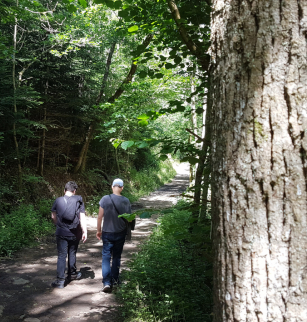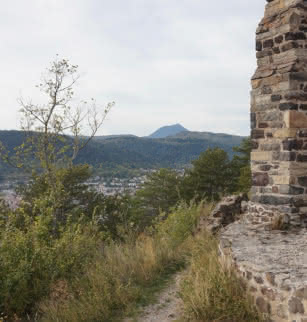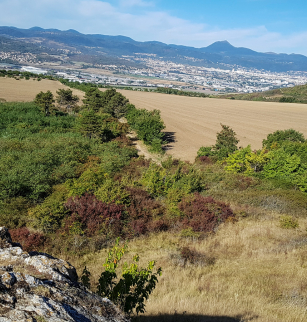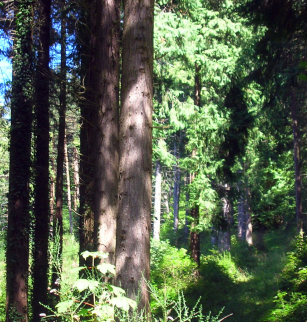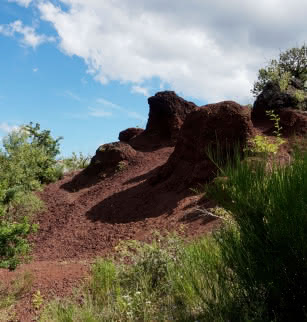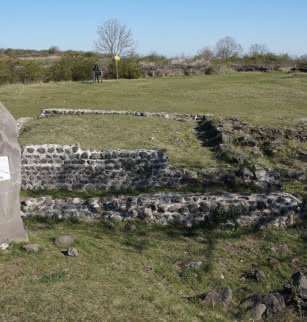Ceyrat Gorge

Hollowed out of a granite plateau by the river Artière, the Ceyrat caves house a remarkable range of plants and wildlife typical of rocky environments.
The Artière is a small river with two branches. One of them originates at the north of Saint-Genès-Champenelle near to Puy de Chatrat at 900 m altitude, and is called Ruisseau de Saint-Genès. The other one, at Manson is called Artière de Boisséjour. These two branches meet at Beaumont, in the Parc du Stade, then the Artière crosses Aubière and Aulnat, bypassing Puy de Crouël in Clermont-Ferrand, and flows into the river Allier at Les Martres-d’Artière. The Gorges de Ceyrat are part of the Ruisseau de Saint-Genès valley, carved out of the eastern edge of a granite plateau south-west of Clermont-Ferrand.
The Gorges de Ceyrat are recognised as a natural wildlife and nature preserve (ZNIEFF certification). The plant life is typical of rocky environments and particularly damp cliffs, in a cold micro-climate. Plant life includes a great variety of mosses and lichens, Asplenium foreziense, a protected fern species that clings to cliffs and rocks, the Martagon lily and the early spider-orchid, which spread on chalk grassland. Among the birds we note a species in decline due to semi-open environments: the Eurasian wryneck. Two species on the regional endangered butterfly list also live on the site: the Poplar admiral, a forest species, and the Chequered blue, which lives in rocky areas.
A marked hiking trail lets visitors discover the Gorges de Ceyrat. Along this trail you will discover the Dolmen de Samson archaeological site, as well as a small waterfall.
Opening dates and times
All year round.
Prices
- Free access.





